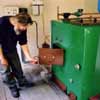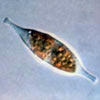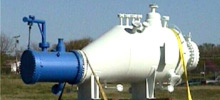| Bio-energy Introduction
Converting raw sources of biomass into high energy green fuels such as
Bio-diesels, ethanol, syngas and methanol is the challenge of many engineering
companies as biofuels appear the most realistic successor to the fossil
fuels of today. In recent years expertise and technologies have developed
to either combust biomass more efficiently or to process in a non-combusting
fashion. Research and development continues in the fields of Gasification,
Pyrolysis and other novel processes.
Energy Crops
Scientists and farmers are working on improved strains of Energy Crops.
Features sought both by GM and natural breeding programmes include increased
carbon content, increased oil yield in strains of sunflower, rape, etc.
Landfill Gas
Landfill sites have become a core part of the emissions reduction strategy
of governments in many countries and techniques to extract and utilise
the gas mix are still improving. However, with more organic material being
extracted and separated at source, landfills will not be matching past
production levels, instead it will be retained locally for treatment such
as anaerobic digestion which will deliver a mix of heat, biofuels and
electricity.
Co-firing & Combined Heat and Power
These processes are improving in terms of higher quality of end product,
but also gaining from the synergy offered by co-generation and Combined
Heat and Power systems. Smaller and more economic machines and improved
techniques are allowing local generation to prosper in many parts of the
rural and agricultural world. The technical improvements to CHP
systems and the development of domestic scale CHP units are paving the
way for much increased opportunities in this area.
|









